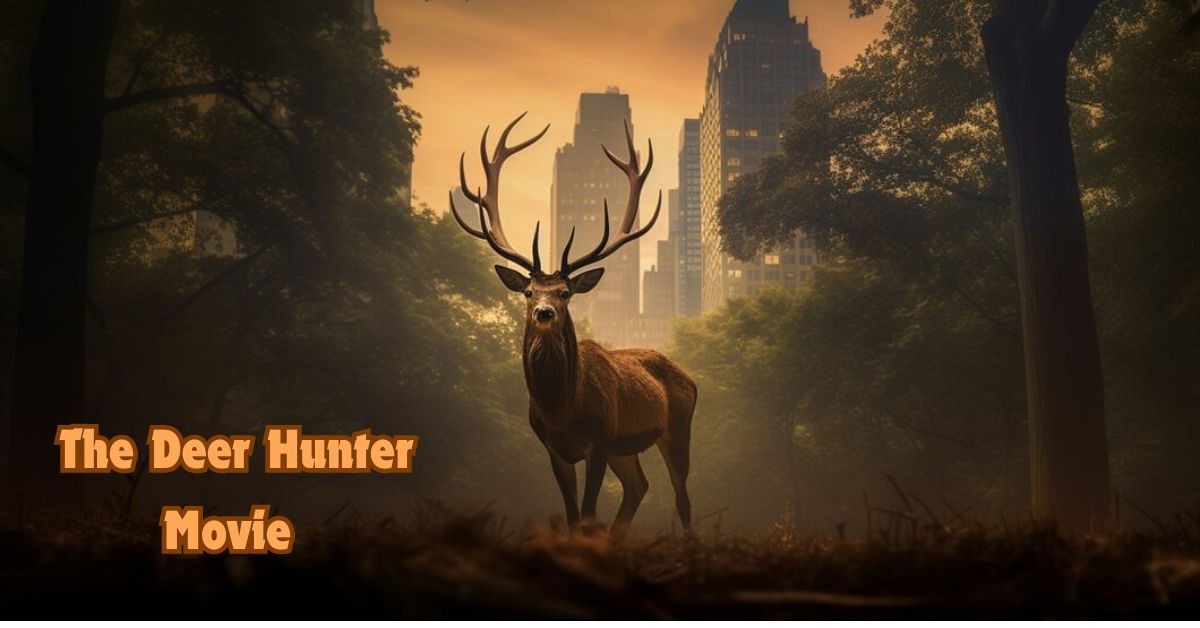Introduction
The Deer Hunter is a film that resonates deeply with audiences due to its raw and unflinching portrayal of the Vietnam War and its aftermath. Among its many harrowing moments, “The Pit” scene stands out for its intense depiction of fear, suffering, and the inescapable darkness that war brings to the human soul. This scene isn’t just a visual experience; it encapsulates the emotional and psychological depth of the film’s core themes.
Overview of The Deer Hunter
The Film’s Significance
Released in 1978, The Deer Hunter quickly earned its place as one of the greatest war films ever made. The movie stars Robert De Niro, Christopher Walken, and Meryl Streep, all delivering powerful performances that reflect the torment and struggles of their characters. The film’s unique structure, divided into three distinct acts, offers a comprehensive look at the lives of three friends before, during, and after the Vietnam War.
Themes of War and Trauma
At its heart, The Deer Hunter explores the deep scars that war leaves on individuals, not just physically but mentally and emotionally. The film uses the Vietnam War as a backdrop to examine how extreme experiences alter human lives. Themes of trauma, loss, and the search for meaning permeate the narrative, making it a profound commentary on the effects of war.
The Role of Symbolism in the Film
The Use of Metaphors
The Deer Hunter is rich in symbolism, with metaphors woven throughout its narrative to deepen the audience’s understanding of the characters’ emotional and psychological states. The deer hunting scenes, the Russian roulette, and, of course, “The Pit” all serve as powerful symbols that connect the personal with the universal.
Psychological Depth in the Narrative
The film is a psychological exploration of its characters, particularly how they confront and cope with the horrors they experience. The use of symbolism amplifies the emotional weight of these confrontations, offering viewers a window into the internal struggles of the characters.
“The Pit” Scene: Context in the Movie
Setting the Stage: Before the Scene
“The Pit” scene occurs in the middle of the film when the three friends, Michael (De Niro), Nick (Walken), and Steven (John Savage), are captured by Viet Cong soldiers during the Vietnam War. Leading up to this moment, the film has already built a slow-burning tension, with the horrors of war looming ever closer.
The Events Leading to “The Pit”
The men are forced into a nightmarish scenario where they must play Russian roulette as part of their captors’ sadistic form of entertainment. This is the moment that crystallizes the full horror of their situation.
Breaking Down “The Pit” Scene
Visual Representation
Visually, “The Pit” scene is dark and claustrophobic. The camera work emphasizes the hopelessness of the situation by confining the viewer’s perspective, mirroring the characters’ sense of entrapment. The murky water and the presence of dead bodies serve as grim reminders of death lurking at every corner.
Emotional Tension and Impact
The emotional tension in this scene is almost unbearable. As viewers, we feel the despair and fear that the characters experience. There’s a palpable sense of doom as the men realize just how dire their situation is, with the pit symbolizing not only their physical captivity but also the mental and emotional hell they are in.
The Symbolism Behind “The Pit”
War as a Hellish Abyss
“The Pit” can be seen as a representation of the hellish nature of war itself. It’s a physical manifestation of the abyss that war plunges people into, where survival is a cruel, unrelenting battle, and hope seems out of reach.
The Descent into Madness
The pit also symbolizes the descent into madness. The conditions in the pit are dehumanizing, stripping away any semblance of humanity. The scene highlights how war forces individuals to confront their darkest fears and impulses, pushing them to the brink of insanity.
“The Pit” as a Reflection of Human Suffering
A Metaphor for Psychological Trauma
Beyond its literal interpretation, “The Pit” can be viewed as a metaphor for the psychological trauma experienced by soldiers during and after the war. The characters’ struggles to escape the pit mirror their internal battles to overcome the memories and scars left by their experiences.
The Struggle for Survival
In “The Pit,” survival is not just about escaping physical death; it’s about holding onto one’s sanity and sense of self. The struggle to survive in the pit is a powerful metaphor for the broader struggles of soldiers trying to survive the war and return to normal life afterward.
How “The Pit” Fits into the Broader Themes of the Film
Loss of Innocence
Like many other scenes in The Deer Hunter, “The Pit” emphasizes the loss of innocence. The characters, once carefree and full of life, are now broken and traumatized by the war.
The Human Cost of War
At its core, “The Pit” represents the ultimate cost of war: the destruction of the human spirit. It shows how war dehumanizes people, reducing them to mere survivors in a brutal, uncaring world.
The Influence of Russian Roulette on “The Pit”
The Psychological Game
The infamous Russian roulette scenes in The Deer Hunter are closely linked to “The Pit.” Both involve psychological games where life and death hang in the balance. In the pit, the characters are not just fighting for their lives; they are battling to retain their humanity in a world that has turned upside down.
Life and Death Stakes
In both the Russian roulette scenes and “The Pit,” the stakes are life and death. This intense focus on survival forces the characters to confront their deepest fears and instincts, making these scenes some of the most gripping in cinematic history.
Character Development Through “The Pit”
Transformation of Michael (Robert De Niro)
Michael’s character undergoes significant development during “The Pit” scene. His role as the protector and leader becomes even more evident as he tries to navigate the horrors of the pit and keep his friends alive. This moment solidifies his transformation from an ordinary man into someone shaped by war’s brutality.
The Bond Between Friends
The bond between Michael, Nick, and Steven is tested to its limits in “The Pit.” Despite the overwhelming fear and despair, their friendship is what keeps them fighting to survive. This scene highlights the strength of their connection, even in the face of unimaginable suffering.
Audience Reactions to “The Pit” Scene
Shock and Horror
The visceral horror of the situation, combined with the emotional depth of the characters’ suffering, creates a powerful impact that lingers long after the scene ends.
The Emotional Aftermath
For many viewers, “The Pit” is the emotional climax of the film. The despair and hopelessness that it evokes resonate deeply, making it a scene that stays with people long after the movie is over.
Critical Interpretations of “The Pit”
Cinematic Analyses
Film critics have often analyzed “The Pit” scene as a turning point in The Deer Hunter. Its symbolism and emotional intensity make it a critical moment that encapsulates the film’s exploration of war’s dehumanizing effects.
Perspectives from Film Critics
Some critics see “The Pit” as a representation of the characters’ internal struggles, while others view it as a broader commentary on the nature of war itself. Regardless of interpretation, the scene is universally acknowledged as one of the film’s most powerful moments.
The Lasting Impact of “The Pit” Scene
Cultural Significance
Over the years, “The Pit” scene has become iconic, often referenced in discussions about war films and the portrayal of psychological trauma in cinema. Its cultural significance lies in its raw depiction of the human cost of war.
Influence on Future War Films
The influence of “The Pit” scene can be seen in many subsequent war films that explore similar themes of survival, trauma, and the psychological toll of war. Its impact on the genre is undeniable, setting a standard for how war is portrayed on screen.
Conclusion
“The Pit” scene in The Deer Hunter is a powerful, haunting representation of the horrors of war. It captures the essence of the film’s themes—suffering, survival, and the loss of innocence. Through its symbolic depth and emotional intensity, the scene leaves a lasting impact on audiences, reminding us of the profound and often devastating effects of war on the human psyche.
FAQs
1. What is the significance of “The Pit” scene in The Deer Hunter?
“The Pit” scene symbolizes the psychological and physical horrors of war, representing the descent into madness and the dehumanizing effects of combat.
2. How does “The Pit” relate to the themes of the film?
The scene encapsulates the film’s exploration of trauma, survival, and the loss of innocence, highlighting the devastating impact of war on individuals.
3. Why is “The Pit” considered one of the most iconic scenes in war films?
Its intense emotional and visual portrayal of suffering and hopelessness has made it a defining moment in cinematic history, influencing future war films.
4. How does the scene contribute to the character development in the film?
“The Pit” forces the characters to confront their darkest fears, leading to significant transformations, particularly for Michael (Robert De Niro).
5. What is the broader cultural significance of “The Pit”?
The scene has become a cultural touchstone, often referenced in discussions about the portrayal of war and trauma in cinema.










